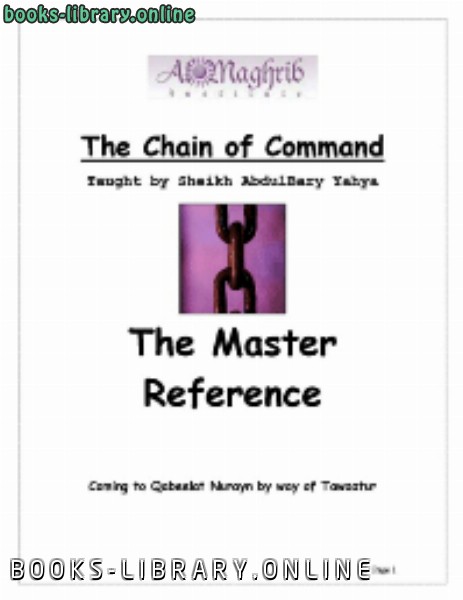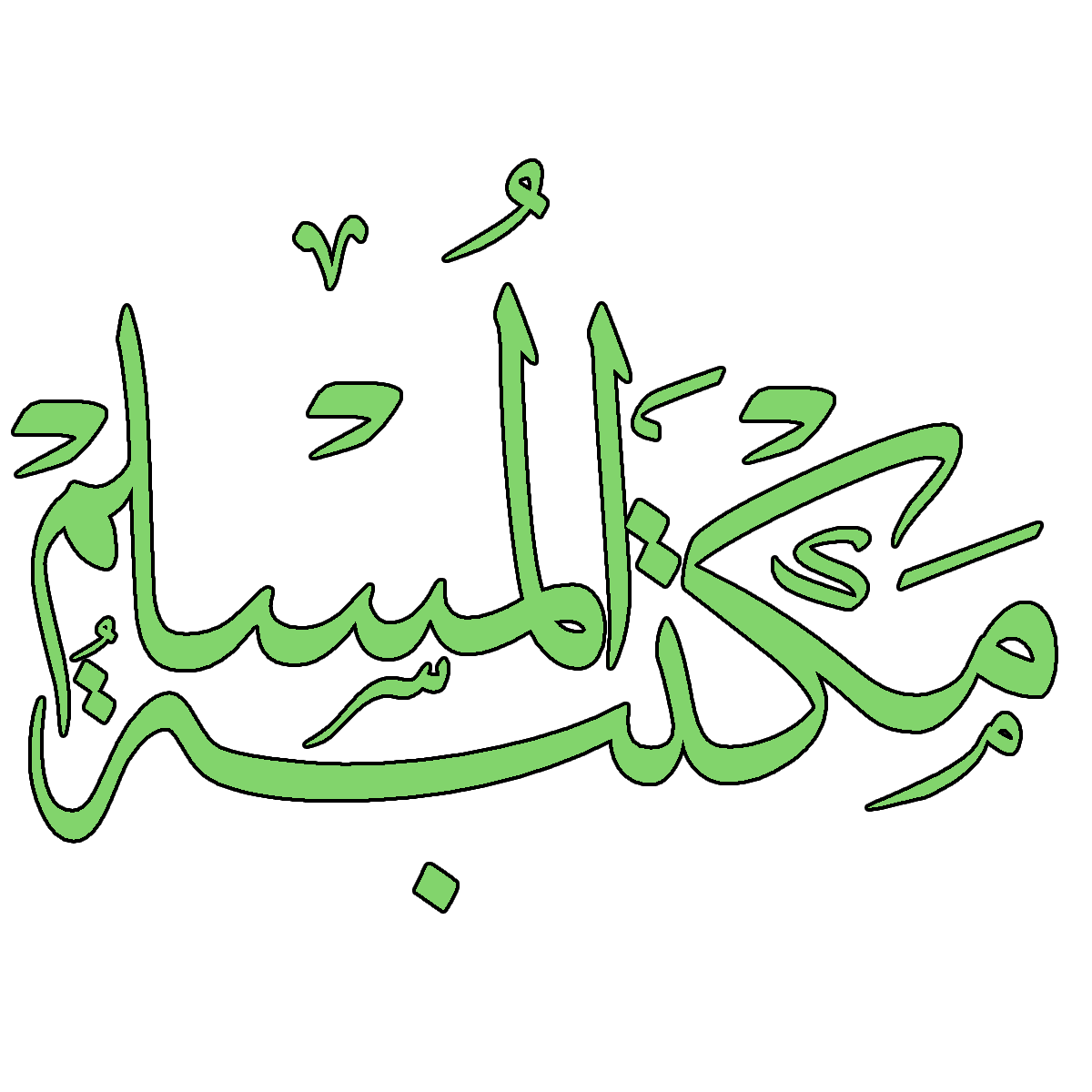📘 قراءة كتاب Chain of Command – Sciences of Hadeeth – Mustalah ul Hadeeth أونلاين


Introduction.....................................................................................................................4
The virtues of Hadeeth and it’s Sciences:...............................................................6
The Benefits of Studying Hadith:..............................................................................9
The importance of manners in seeking ‘ilm............................................................. 13
Motivation....................................................................................................................... 17
Memorization................................................................................................................. 18
Al-Mustalah-ul-Hadeeth: An Introduction............................................................ 20
Al-Mustalah-ul-Hadeeth: An Introduction............................................................. 21
Sunnah vs Hadith......................................................................................................... 26
Sunnah: Its Place in Relation to the Qur’an is of Three Types........................ 38
PROPHET MUHAMMAD و ا:
The Teacher.............................................. 41
History and Compilation of the Sunnah................................................................... 51
ABU HURAYRAH – The Greatest in Hadith of All the Sahaba........................ 55
A’isha bint Abi Bakr – “Habeebat-ur-RasulAllah” ................................................ 64
Hadith Narration .......................................................................................................... 71
The Status of the Sahabah ...................................................................................... 74
Who are al-Mukhadra?............................................................................................... 76
Jarh wa Ta’deel (Criticism of the Narrators) ...................................................... 79
Imam Bukhari – Ameer al Mumineen fil Hadith..................................................... 81
Early Collectors of Hadith......................................................................................... 87
Slavery in Islam ........................................................................................................... 89
The Golden Age of Hadith Collection: .................................................................... 92
(200 H – 300H) ............................................................................................................ 92
Al-Muwatta’ Imam Malik ............................................................................................ 92
The Man Behind Al-Muwatta’.................................................................................... 96
The Sahih Collections:................................................................................................ 97
The Sunan Works........................................................................................................103
Sunan An-Nasa’i ..........................................................................................................107
Other Hadith Collections:......................................................................................... 110
Part II: ‘Ilm ad-Dirayah............................................................................................ 112
A Hadeeth consists of three parts:................................................................... 112
1. The Sanad......................................................................................................... 112
2. The Matn........................................................................................................... 112
3. The Taraf ......................................................................................................... 112
Page 3
Hadith Methodology: ................................................................................................. 115
Classifications of Hadith ..........................................................................................120
Hadith Marfu’ – The “Elevated” Hadith ................................................................ 121
Hadith Moqoof – The “Stopped” Hadith ...............................................................125
Hadith Maqtu’ – The “Severed” Hadith.................................................................126
Hadith Classification by the Isnad Chains ...........................................................128
Hadith Classification by Levels of Reliability......................................................133
Defective Isnad ..........................................................................................................146
Flaw in the Narrator..................................................................................................153
Methods of Transmission of Hadith ......................................................................166
APPENDIX....................................................................................................................168
Appendix: Misconceptions/Advices........................................................................168
Was Khadija really 40? .............................................................................................169
Appendix: Sa’eed ibn Musayyab’s approach to Marriage ..................................170
Appendix: Barakah......................................................................................................172
Appendix: Justice in Islam.......................................................................................174
Appendix: Important Islamic Concepts.................................................................175
Appendix: Sheikh Abdulbary Yahya’s Fiqhi Opinions .........................................177
Appendix: Hadith exercises.....................................................................................179
Appendix: Miscellaneous ...........................................................................................182
Chain of Command, formally known as Mustalah ul Hadeeth or ‘Ilm ul
Hadeeth, is a course regarding the Sciences of Hadeeth. Sheikh AbdulBary
Yahya divided the course into two major sections corresponding to each
weekend. The first weekend essentially covers the Scholars of Hadith,
otherwise known in Arabic as the Muhadithoon. The second weekend is
dedicated to the actual science of scrutinizing and analyzing hadeeth.
Allah (swt) has made a promise to preserve the Qur’an, Surah Hijr,
Verse 9.
إِ َْ!ُ َ َْ اِّآَْ وَإِ َُ ََُِنَ ()
Verily We: it is we who have sent down the Dhikr (i.e. the Qur'ân) and
surely, we will Guard it (from corruption) .
Part of the preservation of the Qur’an is the preservation of the
Sunnah of the Prophet
و
ا .
This is because the Sunnah explains how
the Qur’an is understood and applied. It is in this course we examine how
exactly the second source of legislation, Sunnah, was preserved.
The means by which Allah
و ن has preserved the ٍunnah is through
the Muhadeethoon. The Qur’an has come to us by way of Tawaatur, and its
obvious authenticity is not an issue of discussion. As for the Sunnah, many
do not understand it’s method of preservation and authenticity. Therefore,
it is essential for us to spend time learning about the preservation of the
Sunnah of the Messenger of Allah
و
ا .
By examining the efforts and
lives of the famous scholars of Hadeeth, we get a closer look at their
dedication and accomplishment in preserving the Sunnah.
Linguistically, Mustalah is defined as “terminology.” In
part two, we will, in sha Allah give the technical definition of
Mustalah.
The Sciences of Hadeeth is a very important branch of Islamic
knowledge. Not only for the reasons of preserving the Sunnah, but also
because other Islamic Sciences depend upon it. For example: Fiqh. Fiqhi
rulings are extracted from the Qur’an and Hadeeth. Much of the ikhtilaaf
Page 5
(disagreements) of the Fuqaha (Islamic juridical scholars) have are due to
their disagreement on if a Hadeeth is acceptable or not to apply in rulings.
One faqih (juridical scholar) might have more stringent criteria on hadith
authenticity than another faqih. As a result, we see that mustalah is a
science that affects other Islamic sciences.
Book author :
حجم الكتاب عند التحميل : 3.4 ميجا بايت .
نوع الكتاب : pdf.
عداد القراءة:
اذا اعجبك الكتاب فضلاً اضغط على أعجبني و يمكنك تحميله من هنا:

شكرًا لمساهمتكم
شكراً لمساهمتكم معنا في الإرتقاء بمستوى المكتبة ، يمكنكم االتبليغ عن اخطاء او سوء اختيار للكتب وتصنيفها ومحتواها ، أو كتاب يُمنع نشره ، او محمي بحقوق طبع ونشر ، فضلاً قم بالتبليغ عن الكتاب المُخالف:
 قبل تحميل الكتاب ..
قبل تحميل الكتاب ..
يجب ان يتوفر لديكم برنامج تشغيل وقراءة ملفات pdf
يمكن تحميلة من هنا 'http://get.adobe.com/reader/'


 منصّة المكتبة
منصّة المكتبة 